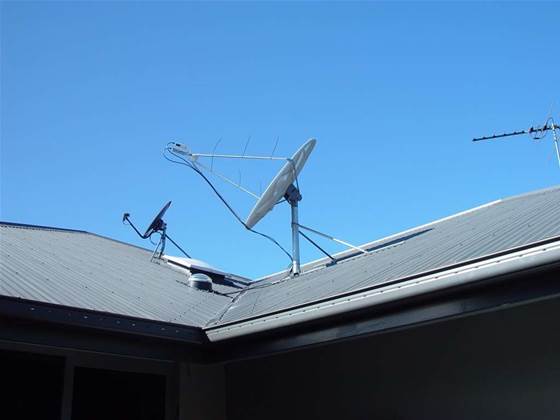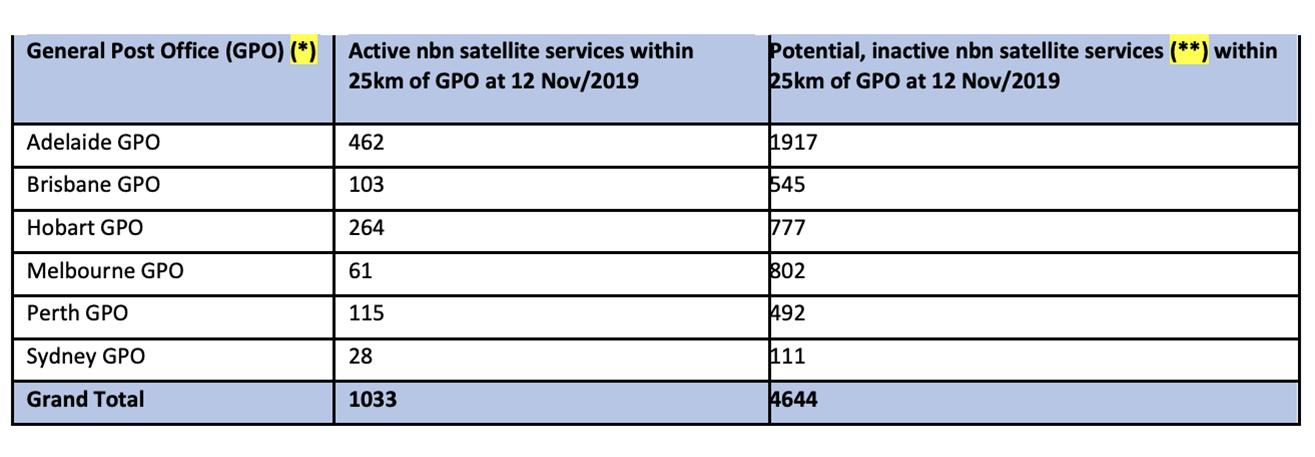NBN Co has revealed over 6000 premises across six major metropolitan areas are now considered to fall within the Sky Muster satellite footprint.

The company produced the new figures in response to an initially-misconstrued freedom of information request [pdf], which disclosed the number of active Sky Muster connections in metro areas, rather than the total number of premises "mapped" for a satellite NBN connection.
There has long been interest in the number of metropolitan fringe premises that NBN Co is putting into the Sky Muster footprint because the cost to serve them with other access technologies is considered too high.
Back in March 2017, a dump of NBN rollout data by electorate showed 4013 premises in “urban” electorates had been allocated Sky Muster.
The newly-released figures show separately the number of premises with "active" and "inactive" Sky Muster services within 25km of a major capital city, excluding Canberra and Darwin.
Taken together, 5677 metro premises have been assigned Sky Muster.
However, with recent changes to the footprint - and using historical figures to account for the missing Canberra and Darwin - it is likely the national number is closer to 6500 premises.
The largest number of premises assigned to the Sky Muster footprint within 25km of a capital city general post office (GPO) is in Adelaide, where 1917 premises fall into that category.
This figure is interesting by itself, but also in the context of a separate set of numbers released by the Federal Member for Mayo Rebekha Sharkie.
To little fanfare outside of South Australia, Sharkie said on January 22 that “at least 450 properties on the outskirts of the Mylor township” - which she said is “20km from the Adelaide CBD” - had been flipped from fixed wireless to Sky Muster.
Sharkie said that “negotiations between NBN Co and a private landowner” to host a wireless tower for the area “had fallen through”, and that the premises had now been rezoned for Sky Muster.
While Mayo is officially designated as a “rural” electorate, Sharkie said her constituents did not see themselves as candidates for Sky Muster.
“My community equates satellite NBN with the technology for remote Australia, not the peri-urban fringe of a major capital city,” she said.
Sharkie’s statement raises the prospect of more areas being added to Sky Muster to enable NBN Co to meet its mid-2020 build completion deadline for most of Australia.
NBN Co's new set of numbers pre-date the flipping of the Mylor premises from fixed wireless to fibre, meaning they should be added in.
Using the 2017 numbers, Canberra and Darwin had about 391 “urban” premises in line for Sky Muster.
Add that to the 450 on Mylor’s outskirts, and the total number of metro premises in the Sky Muster footprint nationwide would be about 6500.
That’s still a proportionately small number of the total Sky Muster footprint, accounting for about 1.3 percent.
The new numbers show only 18 percent of metro premises put in the Sky Muster footprint actually take up a service, suggesting there are better options available elsewhere.
NBN Co noted there were a great many reasons why metro premises may be added to the Sky Muster footprint.
It said an undisclosed number of premises were test or monitoring sites, or “an isolated building in a rural, remote or inaccessible location” that legally had to receive NBN but was realistically never going to need it.
NBN Co also suggested that an allocation to the Sky Muster footprint may not be final; that is, the numbers it released “are reflective of a point in time and may change due to alterations in NBN Co's network deployment plans, such as with upgrades in access technologies”.
TIO fields the complaints
Still, the number of metropolitan premises in the Sky Muster footprint remains an issue, with the Telecommunications Industry Ombudsman (TIO) noting to a Joint NBN Committee inquiry last week [pdf] that it "receives complaints from consumers living in metropolitan suburbs who have been told the only NBN technology type available to them is a satellite service".
"Some of these consumers tell us there is existing legacy telecommunications infrastructure installed to their premises and they are seeking a fixed service option that uses this," the TIO said.
"A practice of connecting satellite services to metropolitan premises over other connection types may impact regional and rural consumers if it in results in a satellite being over-subscribed.
"This may impact the quality of a service or reduce the number or regional and rural premises able to connect to a satellite NBN service in future."





.png&h=140&w=231&c=1&s=0)






 iTnews Executive Retreat - Security Leaders Edition
iTnews Executive Retreat - Security Leaders Edition












_(1).jpg&h=140&w=231&c=1&s=0)



